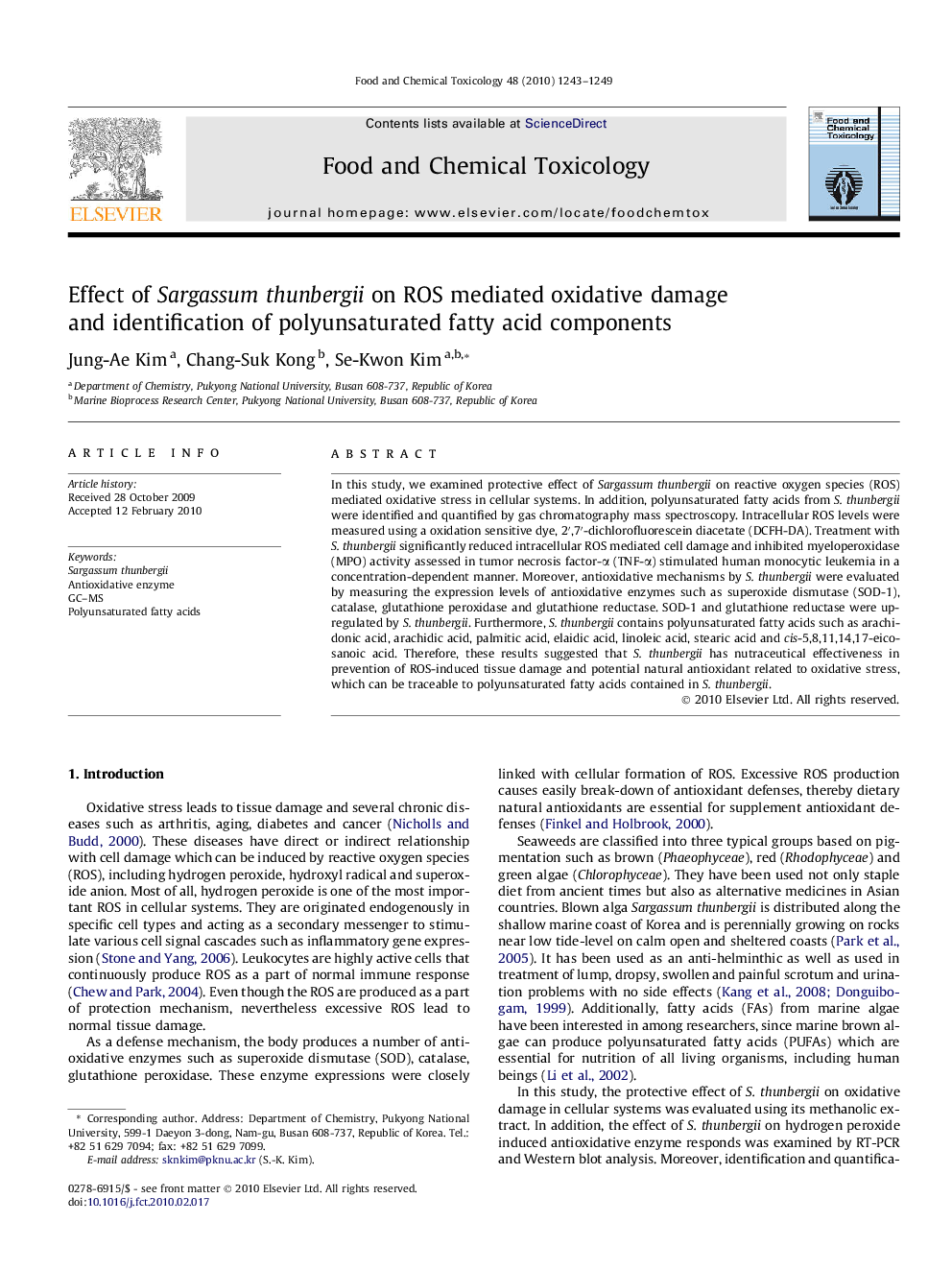| Article ID | Journal | Published Year | Pages | File Type |
|---|---|---|---|---|
| 2585903 | Food and Chemical Toxicology | 2010 | 7 Pages |
In this study, we examined protective effect of Sargassum thunbergii on reactive oxygen species (ROS) mediated oxidative stress in cellular systems. In addition, polyunsaturated fatty acids from S. thunbergii were identified and quantified by gas chromatography mass spectroscopy. Intracellular ROS levels were measured using a oxidation sensitive dye, 2′,7′-dichlorofluorescein diacetate (DCFH-DA). Treatment with S. thunbergii significantly reduced intracellular ROS mediated cell damage and inhibited myeloperoxidase (MPO) activity assessed in tumor necrosis factor-α (TNF-α) stimulated human monocytic leukemia in a concentration-dependent manner. Moreover, antioxidative mechanisms by S. thunbergii were evaluated by measuring the expression levels of antioxidative enzymes such as superoxide dismutase (SOD-1), catalase, glutathione peroxidase and glutathione reductase. SOD-1 and glutathione reductase were up-regulated by S. thunbergii. Furthermore, S. thunbergii contains polyunsaturated fatty acids such as arachidonic acid, arachidic acid, palmitic acid, elaidic acid, linoleic acid, stearic acid and cis-5,8,11,14,17-eicosanoic acid. Therefore, these results suggested that S. thunbergii has nutraceutical effectiveness in prevention of ROS-induced tissue damage and potential natural antioxidant related to oxidative stress, which can be traceable to polyunsaturated fatty acids contained in S. thunbergii.
